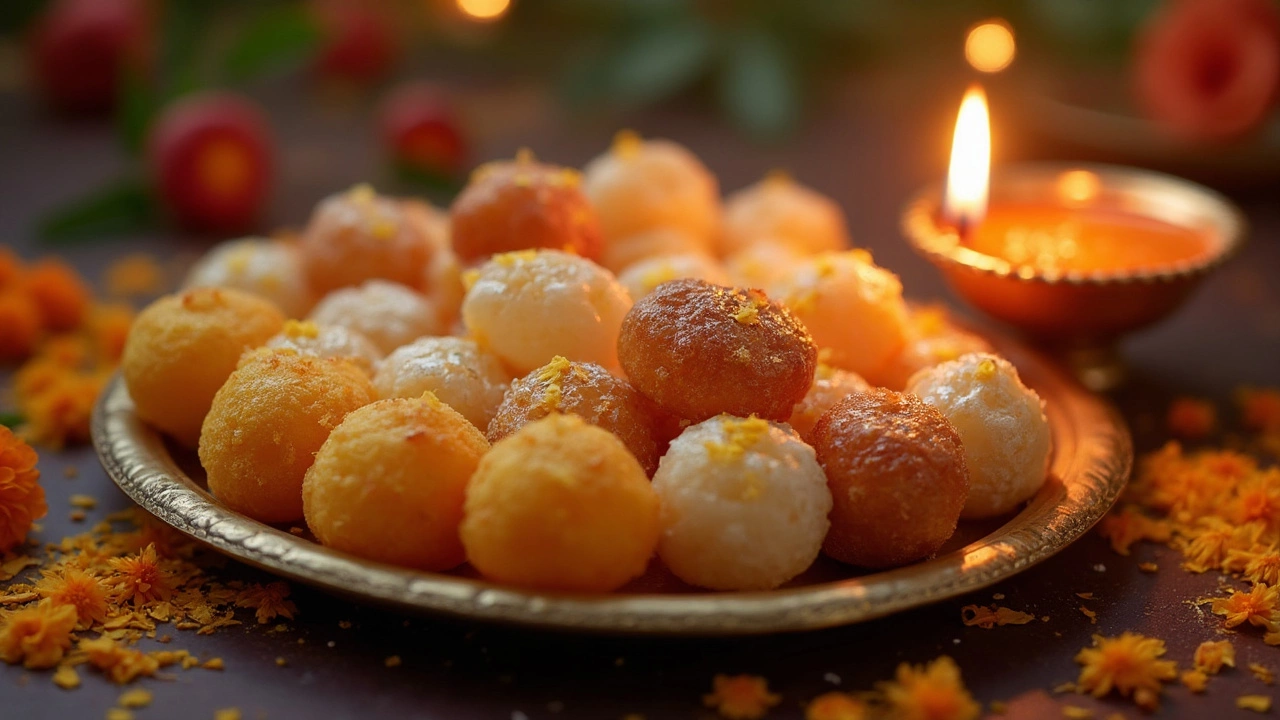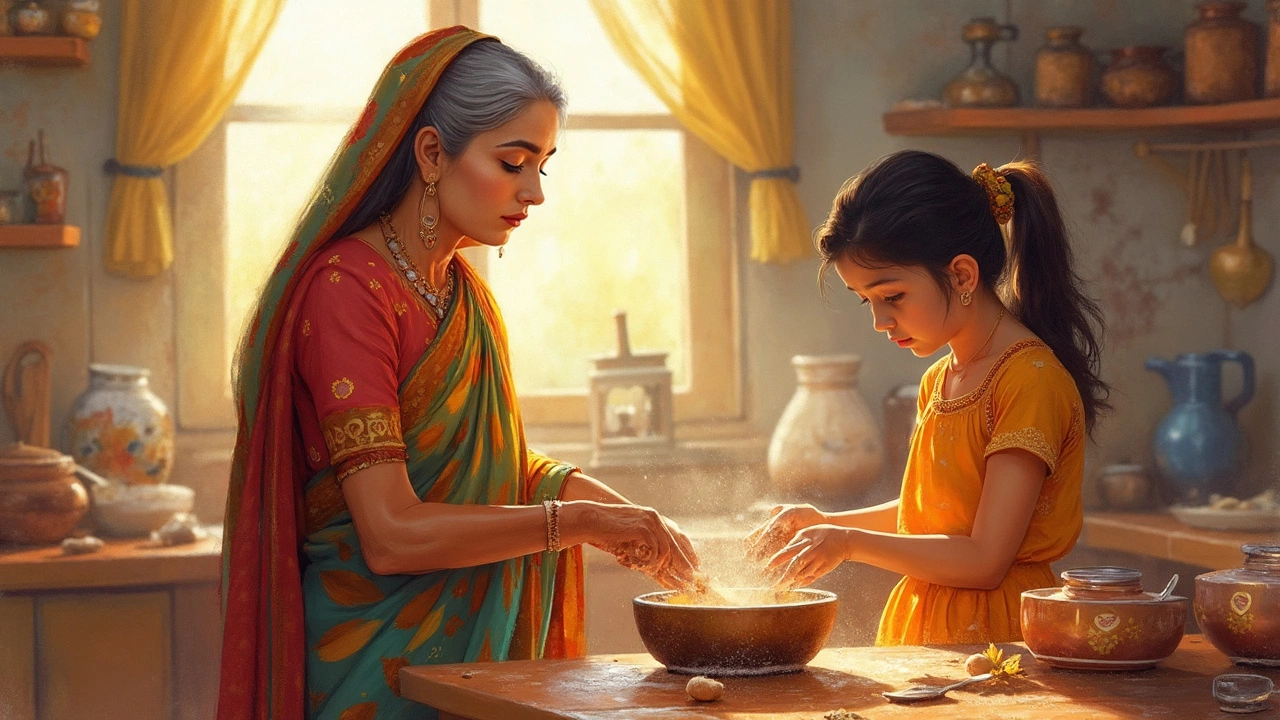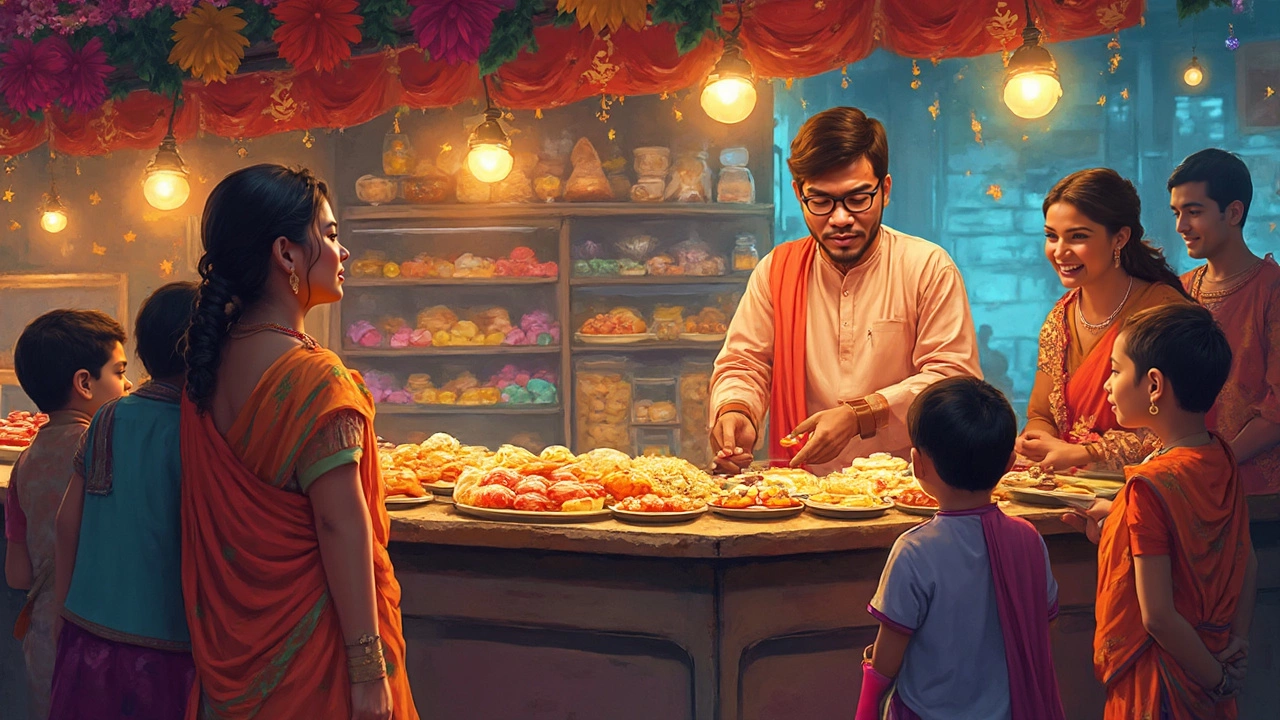Ever wondered why Indians can't resist a bite of something sweet? It's like a universal rule in India: no meal is complete without a dash of dessert magic. Sweets are more than just tasty treats—they're woven into the very fabric of life. Festivals, weddings, or even a casual get-together often feature sweets as a must-have element.
Did you know that every region in India boasts its own unique sweet specialties? From gulab jamun in the North to rasgulla in the East, there's an endless variety waiting to be tasted. It's like a sugary adventure across the subcontinent!
If you've ever wanted to whip up an Indian sweet at home, you're in for a treat—not just literally. Thanks to the explosion of online recipes, you can find easy-to-follow guides for making these delicacies in your own kitchen. Trust me, your taste buds will be eternally thankful.
- The Cultural Significance of Indian Sweets
- Popular Indian Sweets You Must Try
- Easy Homemade Indian Sweet Recipes
- Ingredients That Make Indian Sweets Unique
- Occasions and Celebrations with Sweets
The Cultural Significance of Indian Sweets
The role of Indian sweets in the country's culture is a big deal, and it's not just about satisfying a sweet tooth. Sweets are often the stars in celebrations, symbolizing happiness and prosperity. When someone gets married or a new baby enters the world, sweets are shared extensively to spread joy.
Let's talk about traditions. Have you ever heard of how sweets often mark auspicious beginnings? Whenever there's a festival—whether it's Diwali, Eid, or any regional celebration—offering sweets is a must. Did you know some people even believe that starting a new venture with honied treats can bring good luck? It's like sugar coating your future in the best possible way!
The Role in Festivals
Each festival in India comes with its own blend of desserts. For example, Diwali lights up with mithai, while Eid brings lavish feasts including iconic delights like sheer khurma. The variety is mind-boggling!
Religious and Ritual Importance
In many religious ceremonies, sweets are often offered to deities and then distributed as 'prasad', which is considered sacred. This practice is common across various religions, making sweets not just a culinary delight but a spiritual offering, too.
Data on Sweet Consumption
So how significant is the sweet consumption in India? Check this out:
| Occasion | Percentage of Sweets Consumed (%) |
|---|---|
| Festivals | 40 |
| Weddings | 25 |
| Religious Ceremonies | 15 |
| Everyday Meal | 20 |
As you can see, sweets are consumed widely across various occasions, highlighting their endless importance in Indian culture.
Popular Indian Sweets You Must Try
When it comes to Indian sweets, the variety is as wide as it is delightful. Each sweet has its own story, taste, and place in the culture. Whether you're visiting an Indian restaurant or trying your hand at cooking, here's a rundown of can't-miss desserts that every sweet lover should try at least once.
Gulab Jamun
Let's start with a classic—gulab jamun. These deep-fried dough balls are soaked in a sweet and fragrant sugar syrup. You know it's done right when it just melts in your mouth. Traditionally made from khoya, a type of reduced milk, these are a must-have for weddings and festivals.
Jalebi
If you have a sweet tooth for something crunchy and syrupy, jalebi might just hit the spot. These bright orange spirals are made from a fermented batter, deep-fried, and then dunked in sugar syrup. Eat them hot for that perfect balance of crispy and chewy.
Rasgulla
Rasgulla hails from East India, particularly West Bengal, and for good reason. These soft, spongy balls of cottage cheese are simmered in light sugar syrup, making them a refreshing treat. They're all about that subtle sweetness and light texture.
Kaju Katli
If nuts are your thing, kaju katli is the king of Indian sweets for you. These delicate, diamond-shaped sweets are made from cashew nuts and a touch of sugar. They're often topped with edible silver leaf, making them extra special around the festive season.
Barfi
And then there's barfi, a versatile sweet made from condensed milk and sugar. You’ll find variations that include flavors like mango, almond, and even chocolate. It's like the little black dress of the sweet world—simple yet so elegant.
Each of these sweets offers a glimpse into India's diverse culinary landscape. Whether you're indulging in a special celebration or just craving something sweet, these Indian desserts are sure to impress!

Easy Homemade Indian Sweet Recipes
Who says you need to be a pro chef to whip up some delicious Indian sweets? With a few simple ingredients and a little love, you can create these delightful treats at home. Let's dive into a couple of easy peasy recipes that even a beginner can handle.
Gulab Jamun: The Classic Favorite
What's better than soft and spongy gulab jamuns soaked in a sugar syrup? Not much, if you ask me! Here's how you can make them right in your kitchen.
- Ingredients: Milk powder (1 cup), all-purpose flour (2 tbsp), a pinch of baking soda, ghee or clarified butter (2 tbsp), milk (for kneading), sugar (2 cups), water (1 1/2 cups), cardamom powder (1/2 tsp), a few saffron strands.
- Making the dough: In a bowl, mix milk powder, flour, baking soda, and ghee. Add milk gradually and knead it into a smooth dough. Let it rest for 10 minutes.
- Shaping and frying: Divide the dough into small balls, ensuring there are no cracks. Heat oil or ghee in a pan and deep fry these balls on low flame until golden brown.
- Syrup time: In another pan, mix sugar and water, bring it to a boil. Add cardamom powder and saffron. Let it simmer for a few minutes until slightly thickened.
- Soaking: Drop those fried balls into the hot syrup and let them soak for at least 30 minutes. Serve warm and enjoy!
Kalakand: Quick Microwave Method
If you're a fan of creamy and rich sweets, kalakand is your go-to. Plus, this recipe is super quick, thanks to the magic of the microwave.
- Ingredients: Condensed milk (1 can), ricotta cheese (2 cups), sugar (2 tbsp), a pinch of cardamom powder, nuts for garnish (optional).
- Mix and Microwave: In a microwave-safe bowl, mix together condensed milk and ricotta cheese. Microwave on high for 5 minutes.
- Additions and More Microwaving: Stir well, add sugar and cardamom powder. Microwave for another 5-8 minutes, stirring every 2 minutes until thick.
- Set and Serve: Pour the mixture into a greased tray, spread evenly. Let it cool, cut into squares, garnish with nuts, and you're done!
See, making Indian desserts at home isn't rocket science! Just a bit of effort and you've got a taste of India right on your plate. So why not try these recipes out and impress your family or friends with your culinary skills?
Ingredients That Make Indian Sweets Unique
What makes Indian sweets stand out from the rest of the dessert world? It's all about the ingredients, really. Indian cuisine is known for its love affair with flavors and aromas, and sweets are no exception. Let's take a closer look at what goes into these delectable creations.
Key Ingredients
First up, we have milk. A lot of Indian sweets start with milk or milk solids, like khoya or paneer. It's the base for beloved treats like barfi and rasgulla. The creamy richness just can't be beat.
Then there's sugar. Obvious, right? But Indian sweets use sugar in different forms—granulated, powdered, syrupy—which adds different textures and sweetness levels to each treat.
If you ask any Indian grandma, they'll swear by the magic of spices and nuts. Cardamom, saffron, and nutmeg are a few that dance through these sweets, and a sprinkle of almonds or pistachios on top is the cherry (or rather, nut) on top.
Coconut and Ghee: The Game Changers
Coconut is another game changer, especially in southern Indian sweets. Whether grated or milked, its tropical goodness is a hit in treats like coconut laddoos.
And who could forget ghee? This clarified butter isn't just a cooking fat; it's a flavor enhancer that makes everything richer. As the saying goes, "Ghee adds soul to the sweets."
"Indian desserts beautifully marry dairy, sweeteners, and spices to create a unique symphony of flavors." — Priya Joshi, Culinary Historian
A Few Extra Touches
Don't underestimate the power of flour—gram flour, semolina, and wheat flour each bring their own twist to the texture.
If you're feeling adventurous, step into the world of silver leaf. Yes, you read that right! Some premium Indian sweets get dressed up with a thin layer of edible silver leaf, called varak.
Comparing Milk Products
| Milk-Based Ingredient | Used In |
|---|---|
| Khoya (milk solids) | Barfi, Pedha |
| Paneer | Rasgulla, Sandesh |
As you can see, making Indian desserts is as much about artistry as it is about taste. It's no wonder that these sweets hold a special place in people's hearts—and palates—worldwide.

Occasions and Celebrations with Sweets
In India, it seems almost impossible to celebrate without a sweet treat in the mix. Sweets and celebrations go hand in hand, like best friends who can't be kept apart. Every festival, from Diwali to Eid, is a sensory overload of colors, lights, and of course, the tantalizing aroma of delicious sweets.
Festivals
Diwali, often referred to as the 'Festival of Lights', is when households light oil lamps and indulge in boxes filled with Indian sweets like gulab jamun and barfi. It's all about lighting up homes and adding a bit more sweetness to life. During Navratri, people enjoy sweet offerings like kheer and modak. For Eid, one cannot miss the traditional seviyan, a sweet vermicelli pudding that just has to be a part of the feast.
Wedding Celebrations
Ah, Indian weddings—the grandiose, multi-day events where sweets play a key role. At these weddings, mithai boxes are handed out as gifts and favors, a gesture that symbolizes good luck and prosperity. Popular at weddings are kaju katli and motichoor laddus, sweet treats that guests look forward to devouring.
Everyday Celebrations and Religious Rituals
It’s not just about festivals and weddings, though. Birthdays, anniversaries, or even just a long-awaited promotion at work often call for sweets like jalebi or peda. In temples, offerings to deities often include freshly made sweets, playing a vital role in religious rituals. It’s a way of expressing gratitude and seeking blessings.
Every occasion is another chance to explore and indulge in the vast world of Indian desserts. Whether it's a small family dinner or a grand celebration, sweets have this amazing power to transform any gathering into a joyful occasion.
